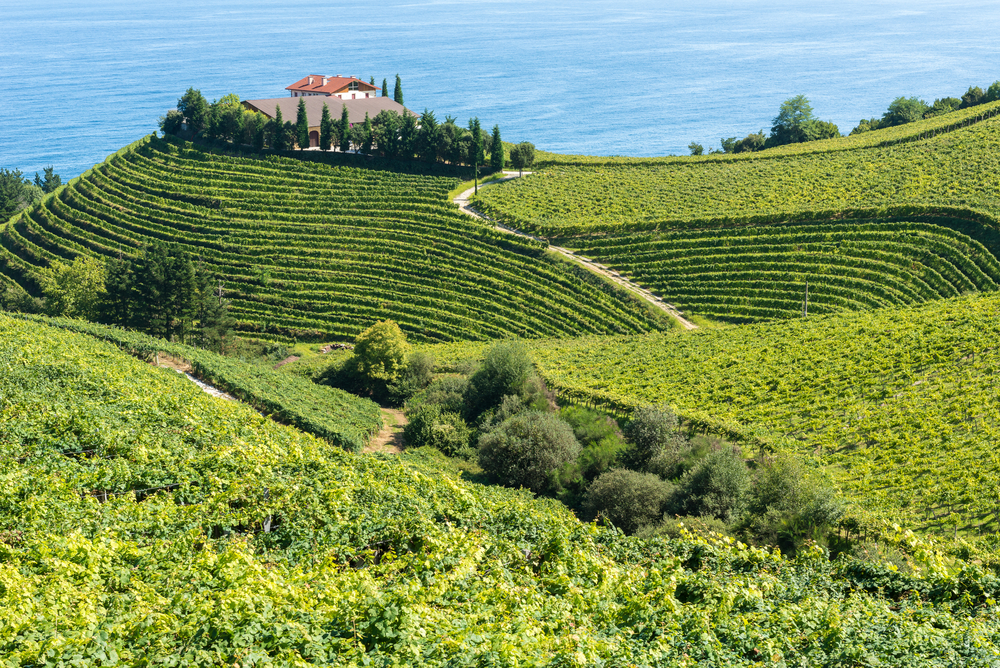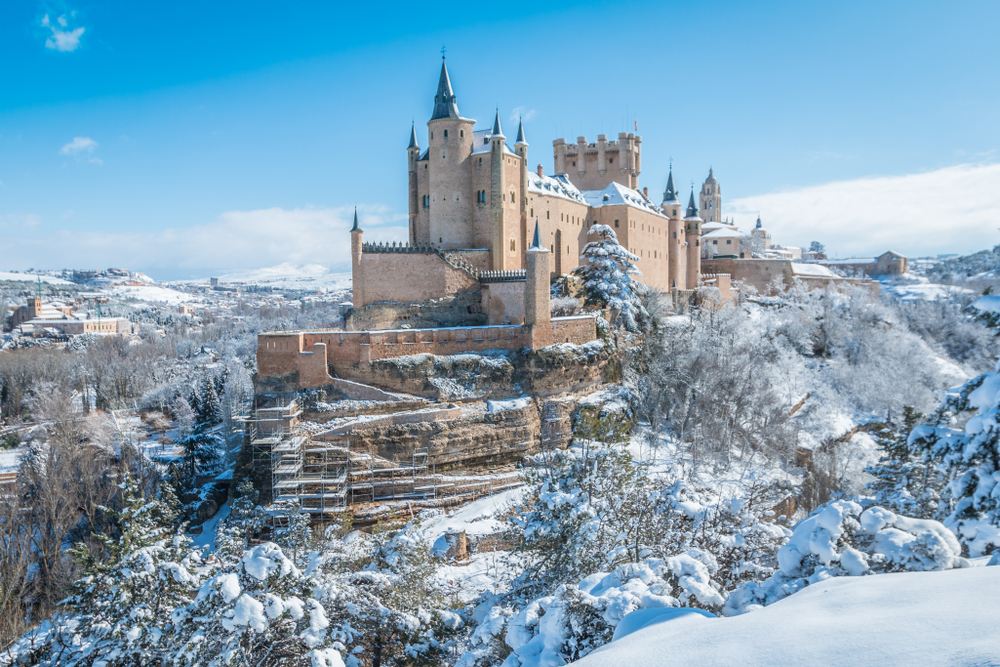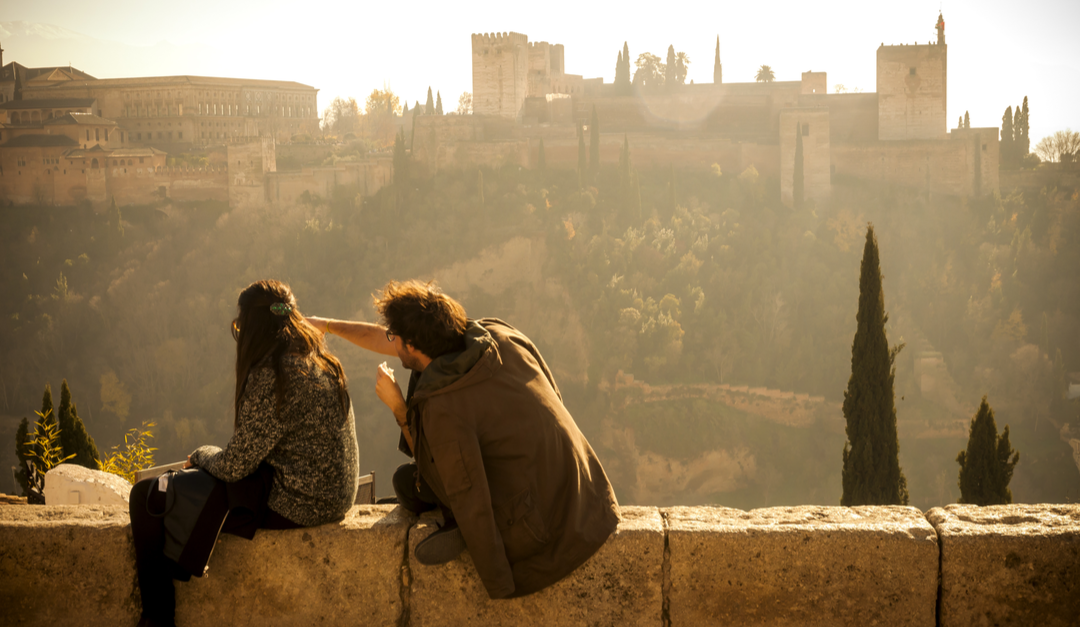While Spain is a single nation, it’s actually composed of many cultures. Visitors can experience a fascinating variety of languages, foods, celebrations, and traditions by traveling from one region to another. Here are a few of the major cultures of Spain and where you can experience them.
Basque

Basque Country is an autonomous region that extends from the Pyrenees mountains in Northern Spain into France. The Basque culture is distinct, with its own language and culture.
The Basque Language
The Basque language is unique and unrelated to Spanish, French, and other European languages. It has several dialects and is spoken by Basques in both Spain and France. The Basque language, also known as Euskara, is something of a mystery, even to linguists. Believed to be Europe’s oldest language, no one is even sure of its origins. While spoken by around 35% of the Basque population, the language was suppressed in Spain for many years.
Festivals
If you’re visiting the Basque region at the right time, you’ll have a chance to experience one of their unique festivals. Here are a few of the most popular Basque festivals.
- Aste Nagusia – Also known as Semana Grande or Big Week, this festival takes place every August in the city of Bilbao. This large 9-day event includes all aspects of Basque culture, with lots of food, costumes, music, and dance. There are also boating events such as regattas as the festival is held by the banks of the River Nervion. Big Week has its own mascot, the giant puppet known as Marijaia. There’s also an Aste Nagusia celebration in the resort town of San Sebastián.
- San Fermín – The Running of the Bulls festival or San Fermín is the best-known festival of the Basques or anywhere in Spain. This week-long event takes place in Pamplona each July. Bulls are released into the city streets each morning for the week of the festival. Visitors are advised to observe from a safe distance as there’s a real risk of getting gored by a bull.
- Batalla del Vino – The Battle of Wine is not just a wine festival but a mock battle where participants spray each other with wine using buckets, bottles, water guns, and hoses. The festival takes place on June 29 in the La Rioja wine country.
Basque Cuisine
If you want to experience a culture, you need to sample its food. Basque Country has lots of distinctive delicacies that you can enjoy on any budget. San Sebastián is especially renowned for its many Basque restaurants, including several with Michelin stars. You can, however, also find many budget-friendly places to eat. One of the region’s iconic foods is Pintxos, small but flavorful snacks served at bars and as appetizers throughout the region. Another favorite is Bacalao a la Vizcaina, made from codfish sauteed in olive oil and sprinkled with a special sauce.
Catalonia

Catalonia is another region of Spain with its own culture. Centered around the great city of Barcelona, Catalonia is another of Spain’s autonomous communities. When you enter this region, you’ll notice some differences from the rest of Spain. Aside from hearing a different language, you’ll see flags and emblems of the Catalan Burro (donkey), the symbol of Catalonia.
Barcelona
If you want a concentrated experience of Catalan culture, be sure to visit Barcelona. Here are just a few of the sites worth visiting on your Catalonia tour.
- Barri Gòtic – The Gothic Quarter is one of the oldest parts of the city and full of old churches such as the Barcelona Cathedral.
- Boqueria Market – This market dates back to 1840 and is a great place to sample local foods such as bacalao, a type of salted cod and jamón ibérico, the Iberian version of cured ham.
- Parc Güell – Designed by the famous Catalan architect Antoni Gaudí, this unique park has all kinds of artwork, pathways, gardens, and surreal structures built for its aesthetic quality rather than for any practical function. This is one of the best places to appreciate the modern architecture of Barcelona.
Catalan Language
Unlike the Basque language, Catalan is related to Spanish and other Latin languages though it has a unique grammar and vocabulary. Most Catalans speak both Spanish and Catalan. In Barcelona and other areas popular with tourists, many speak English as well.
Cuisine
The food of the Catalan region is a mixture of meat and seafood dishes. Some popular dishes include Mandonguilles amb sípia, made with meatballs and cuttlefish. A common staple you’ll find throughout the region is pa amb tomaquet, a simple but delicious dish made of toast, tomato and olive oil. Botifarra is a type of spiced sausage often served in tapas or with pa amb tomaquet.
Catalan Festivals and Special Events
Catalan culture has had a huge impact on Spain, some of which you can experience by attending one of the many events that occur during the year.
- Primavera Sound – A modern music festival rooted in Catalan traditions. Held every spring, this Barcelona festival incorporates music from every genre. The next Primavera Sound festival will take place May 30-June 1, 2019.
- Saint Jordi Festival – On April 23, Barcelona is full of events celebrating Saint Jordi (Saint George), a Catalan patron. This day is considered the Catalan equivalent of Valentine’s Day, with a tradition of men giving flowers to women. However, the festival is also dedicated to literature so it’s also a good day to find vendors selling all kinds of books.
- Feast of Sant Joan – This is a festival held around the time of the Summer Solstice. In Barcelona and other parts of Catalonia, there are lots of fireworks, displays, parties, and parades.
Castillian Culture

The Castillian influence on Spain has been so pervasive that it’s become part of the country’s mainstream culture. For example, Castillian Spanish, also known as Castellano, is the official language of Spain. The area gained prominence in Medieval times as the Kingdom of Castile, along with the Kingdom of Leon became among the most powerful regions in what is now modern-day Spain. You can still find many remnants of these old kingdoms in the Castilla y León region.
Castilla y León
Castilla y León is the largest region in Spain, composed of 9 provinces in the center of the country. It includes the cities of León, Salamanca, Avila, and Valladolid, the capital. Most of the region, however, is covered by Meseta Central, a huge plateau. Wildlife lovers can find some of Europe’s rarest animals in the uninhabited parts of Castilla y Leon, including the Iberian Wolf, Golden Eagle, European Brown Bear, and many others. Hoces del Rio Duratón Natural Park is a good place to get a feeling of the region’s geography and wildlife. Some of Castilla y León’s cultural attractions include:
- Collegiate Church of Saint Isidore – This 10th-century church in León is one of the best-preserved structures from the Romanesque period.
- El Acueducto – This Roman aqueduct dating back to the 1st century AD is one of the highlights of Segovia
- Palacio de los Guzmanes – This beautiful Renaissance palace in León is open to the public with guided tours.
- Museo Nacional de Escultura – The National Museum of Sculpture in Valladolid has one of Europe’s best collections of sculpture from the Middle Ages to the 19th century.
- Food and Wine – Castilla y León has lots of great restaurants and is renowned for its wine regions. Because it’s such a large region you can find many types of cuisine. Some of the most popular dishes, however, include meat dishes such as roast suckling pig and lamb. You can also find lots of restaurants serving local game and vegetables.
Spain: One Nation, Many Cultures
Spain, perhaps more than any other European nation, is defined by its diverse cultures. Over the centuries, the area that encompasses modern Spain was occupied or otherwise influenced by the Celts, Romans, Vandals, Moors, and others. These influences can still be seen and felt in many areas today. With its 17 autonomous regions speaking multiple languages (aside from Basque and Catalan, there’s Galician and Occitan), you can find a wealth of traditions in this multifaceted nation. If you really want to understand and experience the many cultures of Spain, you’ll have to return many times.
Contact us today to plan your next journey to Spain.

